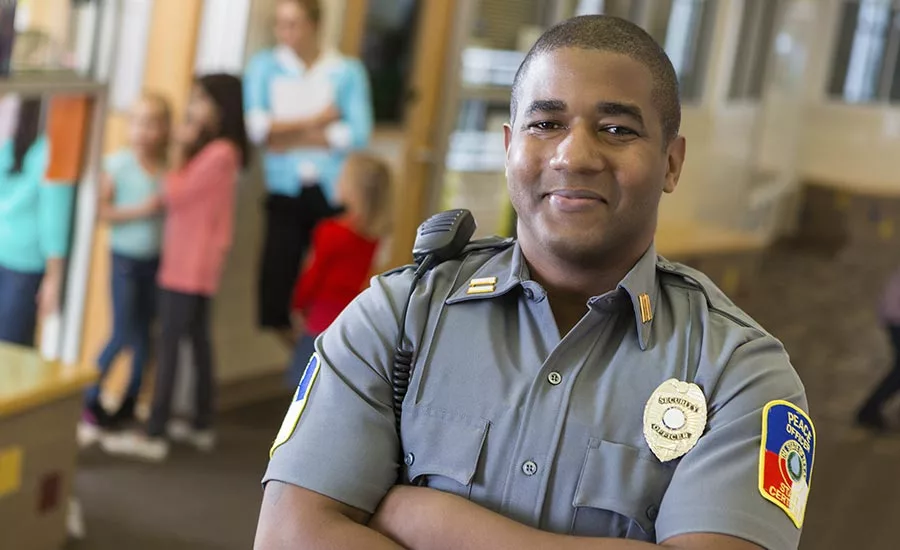Why You’re Hearing “No:” Insurance Considerations for Security Firms Serving Schools

As we reflect on the first anniversary of the Mandalay Bay shooting, it is sobering to consider the real risks facing any large group of people. A gathering of hundreds or thousands of people is vulnerable to attacks of violence and, unfortunately, over the past several years, we have seen that schools are also such targets.
In response to these high-profile attacks on some of the most vulnerable members of our society, many schools have chosen to enhance their security practices. A big part of this is hiring armed security personnel or working with law enforcement to staff school resource officers (SROs). Typically, insurers have been reluctant to cover an armed security officer who has no law enforcement training. You may have found your insurance broker has limited options when seeking insurance markets to underwrite security officers in schools.
Why? What’s going on here?
From an insurance perspective, we are forced to consider the significant risk exposure to a large group of people and the risk exposure to security officers operating in such an environment. Sensitive, crowded targets like schools are considered “high-profile” risks. In these settings, if a tragic incident occurs, security firms are often held responsible – even if officers respond to a shooter professionally, ethically and intelligently. There is often a reputational risk to the officers and the firms that employ them, as they are perceived as failing to prevent tragedy.
Taken together, these sad realities make it difficult for security firms to find insurers able to provide adequate, affordable coverage to officers working in schools.
Schools boards can protect their students and themselves by ensuring every district building is staffed only with properly trained and screened officers. A criminal background check is the foundation of this process. Any officers being considered for armed posts should be referenced against lists of individuals who are not permitted to carry firearms. Though this sounds somewhat obvious, security firms are regularly fined for not adequately screening officers.
Furthermore, I have seen the benefits of situational training for security officers, which teaches them about using the right amount of force for the environment they serve. It is a critical layer of education for armed security officers.
The most qualified – and easier-to-insure option – for a school setting is an off-duty or former law enforcement officer. Because law enforcement personnel receive extensive screening and training, they are better equipped to de-escalate challenging or deadly situations. I encourage schools to consider SROs; as a parent, I am most comfortable with these professionals who are highly qualified to work in school settings.
It is also important to note that different municipalities and states have different licensing requirements for armed security officers. Officers posted in schools should always adhere to these requirements. It is important that those officers are equipped with strict post orders. While it is up to the school board to decide what the security officer does, security firms should not shy away from encouraging schools to perform a complete security assessment to gain a deeper understanding of their risks and exposures.
My opinion on this matter has evolved over the past year. I never wanted armed officers in schools – let alone in my children’s schools – because the underwriting data did not support this approach. In the past, adding another gun to a school appeared to only increase the danger to students and officers. However, as we face the reality of continued school shootings, I now believe we need to equip schools with the knowledge they need to retain highly qualified armed officers and we need to equip these officers with the knowledge and resources they need to best serve the next generation.
